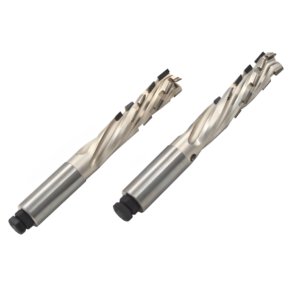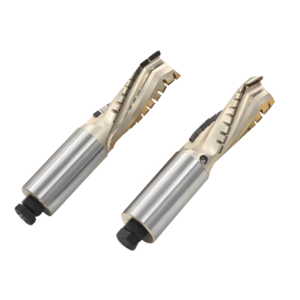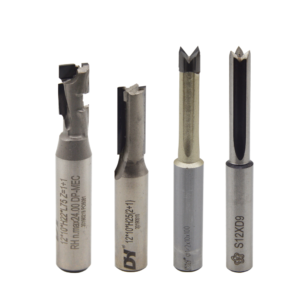- What is PCD?
- Features of PCD Cutters
- PCD Cutters vs. Carbide Cutters
- PCD Woodworking Cutters
In the world of CNC, tool manufacturers go to great lengths to design cutters with specific materials to achieve the desired surface finish on the cut surface, extend tool life, or increase cutting speeds, each with its own unique advantages.
Among them, diamond (PCD) cutters have become an indispensable tool in woodworking due to their excellent cutting performance, durability, and versatility. This high-performance tool will take your woodworking projects to a whole new level.
However, diamond cutters are much more expensive than the solid carbide milling cutters we all like. Is this price worth it? In what aspects does it differ from carbide? What highlights does it have that are worth our attention? This article will answer these questions one by one.
What is PCD?
Polycrystalline diamond (PCD) is a synthetic material invented by two Swedish researchers in 1953. Polycrystalline diamond (PCD) tools are composed of diamond particles that are sintered with a metal binder under extreme temperatures and pressures. This manufacturing method allows diamond particles to be fused to a carbide matrix and produces one of the hardest and most wear-resistant materials.
Features of PCD Cutters
Diamond cutters are cutting tools used in woodworking and industrial applications to achieve precision machining results.
Versatile range of applications: The use of polycrystalline diamond material makes it ideal for cutting a wide range of materials, from cutting hardwoods and softwoods, to composites, laminates, plastics, solid surfaces, fiberglass, and even non-ferrous metals.
Durability: PCD cutters last longer than traditional cutters. The high wear and heat resistance generated by the high hardness of the diamond material ensures the long-term durability of PCD cutters, and the low number of tool changes reduces downtime and is cost-effective in the long run.
Precision: With diamond-tipped cutting edges, these cutters can provide unparalleled precision, allowing for complex designs and delicate woodworking tasks, which is also a key aspect of PCD cutters excelling.
Especially in dense or hard materials. The enhanced cutting efficiency of PCD tools not only speeds up the cutting process, but also ensures a smoother surface, minimizing the need for additional grinding or refining. This efficiency means saving time and increasing productivity on woodworking projects.
At the same time, whether you are dealing with complex contours, mortises or some special shapes, PCD tools provide precise and clean cuts, even in demanding applications.
PCD Cutters vs. Carbide Cutters
As mentioned above, the cutting edge of PCD tipped cutter lasts much longer than carbide, with extremely long service life. Depending on the material being cut, the performance of PCD cutter can be compared to that of carbide cutter by about 300:1.
Among them, when using PCD tools to cut hardwood or composite boards, tool life can be up to 25 times higher than traditional carbide tools. Although the initial investment of PCD tools may be higher compared to carbide, the long-term cost savings are obvious.
When you need to cut materials like carbon fiber or fiberglass, standard carbide cutter will wear out quickly, while PCD cutter will wear out much more slowly than carbide.
And the possibility of chipping or burring when cutting particleboard, MDF, HDF and many composite materials is much less than that of carbide.
PCD Woodworking Cutters
PCD (Polycrystalline Diamond) has been used in the wood/composite industry for more than 40 years. The main applications are circular saw blades, milling cutters and pre-milling cutters.
PCD saw blades are an excellent choice for cutting abrasive materials on panel saws, sliding table saws and other special sawing machines;
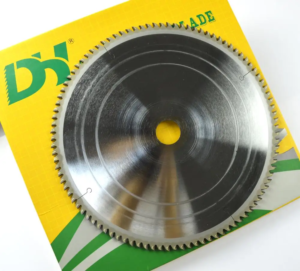
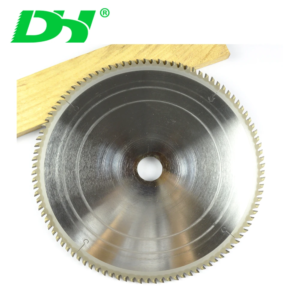
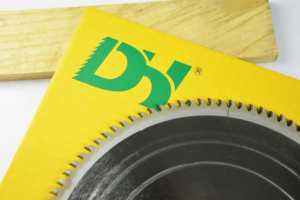
Diamond pre-milling cutters are widely used in edge banding machines to pre-mill the edge surface to be edged, usually MDF or particleboard surfaces;

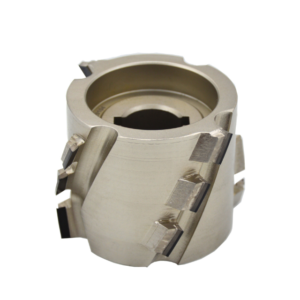

And PCD router bits are special cutting tools for woodworking and can be used in a variety of woodworking projects such as cabinetry, furniture making, sign making, etc. They are particularly beneficial for projects involving cutting hard and abrasive materials.
